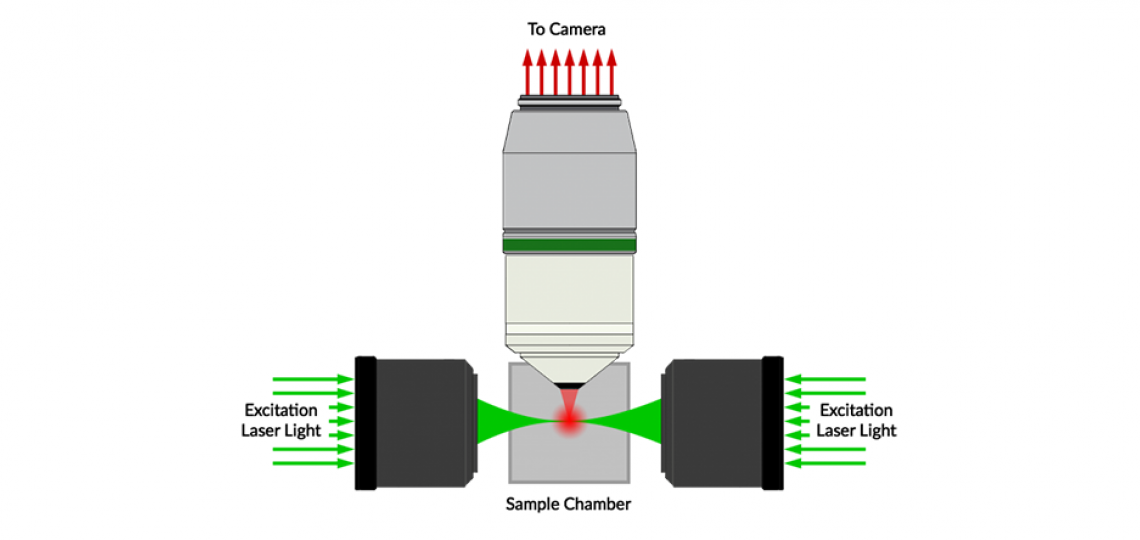LightSheet microscopy is a fluorescence technique that projects a thin ‘sheet’ of excitation light perpendicular to the direction of observation. This type of a system uses cylindrical optics to focus a laser into a narrow field in the Z dimension, thus illuminating the entire XY image plane but only a small volume in the focus (or Z) dimension.

Emission signal from this volume is collected by a CCD camera positioned perpendicular to this plane – imaging the entire XY dimension as you would in a traditional epifluorescence microscope. The result is an optical section that is slightly thicker than a typical confocal section, but can be imaged at a much faster rate.
Perhaps most importantly, the sample holder can be translated in 4 dimensions (XYZ, 360° Rotation) which allows the user to position the sample for optimal sectioning. A typical confocal only moves in X, Y and Z. The ability of the stage to rotate allows optical sectioning from multiple angles through the specimen. This is very valuable for large scale whole mounts where more traditional imaging from only one angle would be limited by the working distance of the microscope objective, typically a few millimeters. With a system like this you can image a few millimeters from opposite slides of the sample thus doubling the effective sectioning volume.
The LightSheet microscope can be used for imaging entire embryos, brain and other organs from a variety of small animal models. It is a great way to get large volumes of 3D data quickly over a very large field of view.
See our ‘Available Instruments’ list (above right) for details about our lightsheet microscope.
Optical Imaging & Vital Microscopy Core
Phone: (713) 798-6486
Email: oivm@bcm.edu








